NC500 – What is it?
All the sights along the coastal route of the Northern Scottish highlands were always there – what was needed was “packaging”. So, in 2015, some bright marketeer put it all together and gave it a brand name – North Coast 500 or NC500 for short.
This circular coastal route starts and ends in Inverness and loops mostly along the coasts of Scotland’s northernmost highlands. It encompasses over 500 miles (well, not exactly) of scenic landscape, ancient historic castles, waterfalls, lakes, secluded beaches, trails and wild woods. A large part of this route is on single track roads – but there are plenty of road signs and good roads, too.
Most of the attractions are on diversions from the main route. Here are some of the spectacular places we came across on the East Coast part of the NC500 route.
ROGIE FALLS
As we started on the NC500 route from Inverness, Rogie falls is located within 30 mins drive as a diversion into the A835 west.
There is a short walk from the parking lot through the woods to reach a suspension bridge over the Black water river and get the awesome views of the falls!
The falls are very impressive but a lot of visitors come here to see the wild salmon leaping upstream which happens mostly in August and September.
FAIRY GLEN FALLS
Another 30 mins of driving and diverting towards the east coast are the beautiful Fairy Glen falls. There is a parking lot, and lots of signage. It is a 3 kilometres hike (one way) through steep wooded path and many steps. It takes about an hour and half to reach the falls.
Yes, there is a Scottish folklore here too. The Fairy Glen was once the scene of a well-dressing ceremony, where the children of the village decorated a pool, next to a spring, with flowers. This was said to ensure that the fairies kept the water supply clean.
The falls are worth the steep and rather difficult walk. A place to get good exercise and views.
FORTROSE CATHEDRAL
These 13th century cathedral ruins lie in the small town of Fortrose on the Black Isle. The red sandstone ruins are in a well-maintained place, surrounded by houses. There are some informative plaques and grave markers dating back to the 1800s.
All that remains today is the south aisle and the undercroft of the chapter house from the medieval cathedral of Ross.
A peaceful place to walk around, read the limited information and take pictures.
FALLS OF SHIN
These waterfalls lie within a scenic wooded section of Achany Glen. The falls are famous for being one of the best places to view salmon leaping the torrents during the season between June and September. A short walk from the parking lot and a big viewing platform makes it easy for all to enjoy the falls.
The earlier Shin centre called the ‘Harrods of the north” was destroyed by fire in 2013. The centre reopened in 2017. Now, there is a new visitor centre, with a restaurant, mini-golf and beautiful forest walk options. There are 4 woodland walks of various levels of difficulty from 15 minutes to an hour’s mixed terrain, so that there is something for everyone.
DUNROBIN CASTLE
Located in the village called Golspie, Dunrobin Castle is probably the most visited iconic castles in the NC500 route. It is the largest house in the highlands with 189 rooms.
Its towering spires and beautifully manicured gardens are truly impressive. It overlooks the Moray Firth and was once the home of the Earls and Dukes of Sutherland. During the first World War, it was used as a Naval hospital and a fire damaged some parts of it. What we see today is after Scottish architect Sir Robert Lorimer made major changes to the interior and to the main tower.
There is an interesting Museum with hunting trophies and a unique collection of Pictish stones, a Falconry worth mentioning with an hour-long live display twice a day in the garden, a castle restaurant, tea room and a gift shop.
BIG BURN WALK AND WATERFALL
Located in Golspie, this hidden gem is truly hidden and unless you look for it and take the right turn, you could miss it altogether!
The signage is small and not prominent. There is parking just for a few cars.
It is an enjoyable walk through several bridges, streams and lovely trickles of waterfall here and there. The ground was covered with British bluebells and wild garlic. You can hear the sound of the river flowing. There are many steps, some a bit steep but totally worth the climb. At the end, it is a dead end at the viewing platform and you cannot see the fall while walking towards it. Once you reach the platform and look left, it is just ‘Wow” and truly if the viewing platform had not been built, it would have been difficult to see the fall.
On the way back, climb up more through steep steps and you can see the same fall from the top looking down.
We thoroughly enjoyed the walk, the views and is a must-visit place.
HELMSDALE
Driving further northwards on the east coast brings you to this picturesque harbour. It also has an award-winning visitor centre that tells the story of the area from earlier times during the infamous Highland Clearances. That’s a time when many farmer tenants were evicted from their homes during the 18th and 19th century.
There are huge bronze statues of such families on a hill called The Emigrants as a memorial.
The harbour was once home to one of the largest herring fishing fleets in Europe.
JOHN O’GROATS – SIGNBOARD AND LIGHTHOUSE
John o’Groats is the place famous for being at the northern end of the 876-mile route that connects it to Land’s end in Cornwall at the South western end. There is a nice signboard where people take pictures under just like the one at the Land’s end.
It’s a nice open place with sea views (on a clear day you can see views of Orkney). Ferries ply to the islands from here. There are also options of for sightseeing wildlife ferries. In addition, you could enjoy hot meals and coffee at a café here and look for some gifts at the gift shops.
There is a lighthouse at the nearby Duncansby Head and this is the perfect place to bring out your binoculars and enjoy the views of sea birds on sea cliffs, seals and walk around if the weather is good.
Often, John O’ Groats end is mistakenly referred to as the northernmost point of mainland Britain.
DUNNET HEAD
Dunnet Head, that is nearby juts out into the North Sea and is the most northerly point of mainland Britain! The views here are wonderful if the visibility is good and you may be able to see Orkney from here. The sheer cliffs that are about 300 feet high and provide home to flocks of birds including puffins, razorbills and more.
A few tips about the drive
– The east coast drive starting in Inverness and ending in John O’Groats should take no more than 5 days including stopping comfortably at all the places listed above.
– We stayed in Airbnbs but there are quite a few small hotels and Bed and Breakfast options in this route.
– Gas stations are in short supply here and it is a good idea to fill up the car whenever possible.
Well, this is just the east coast of NC500. There is a lot more driving and exploring along the north and west coasts to finish the loop!
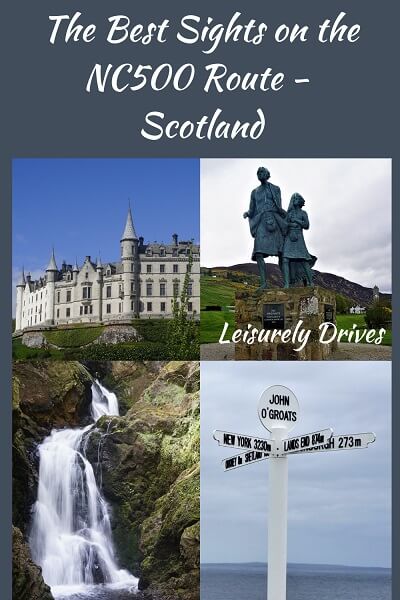
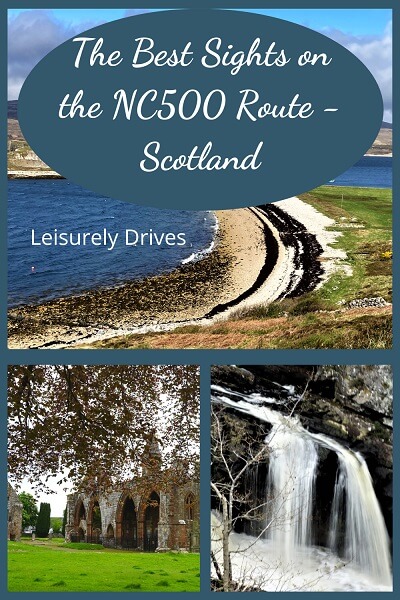

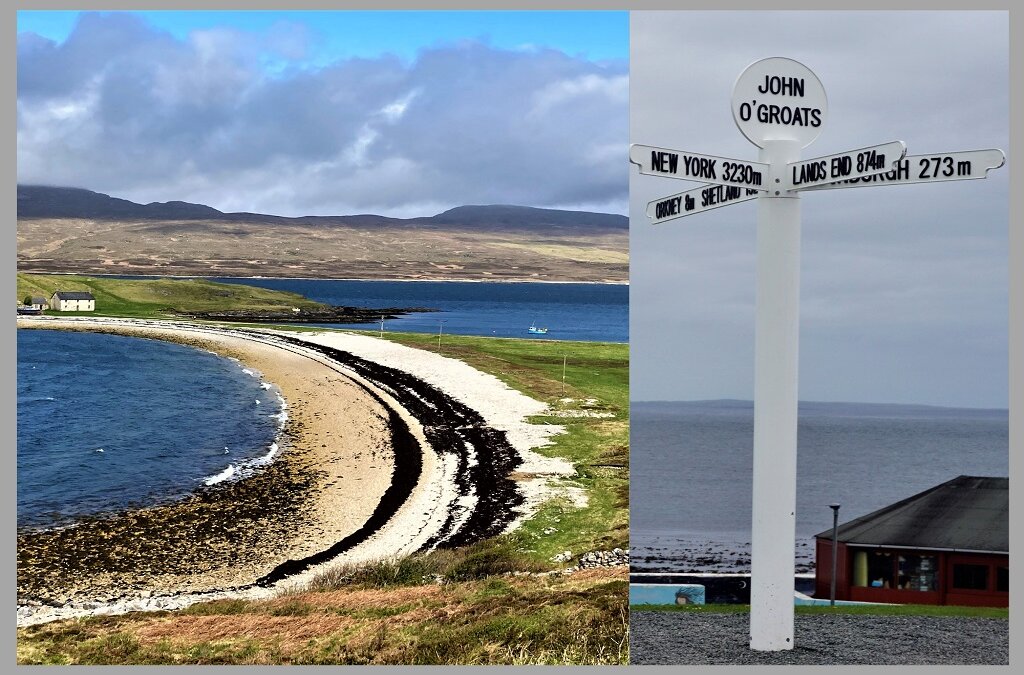
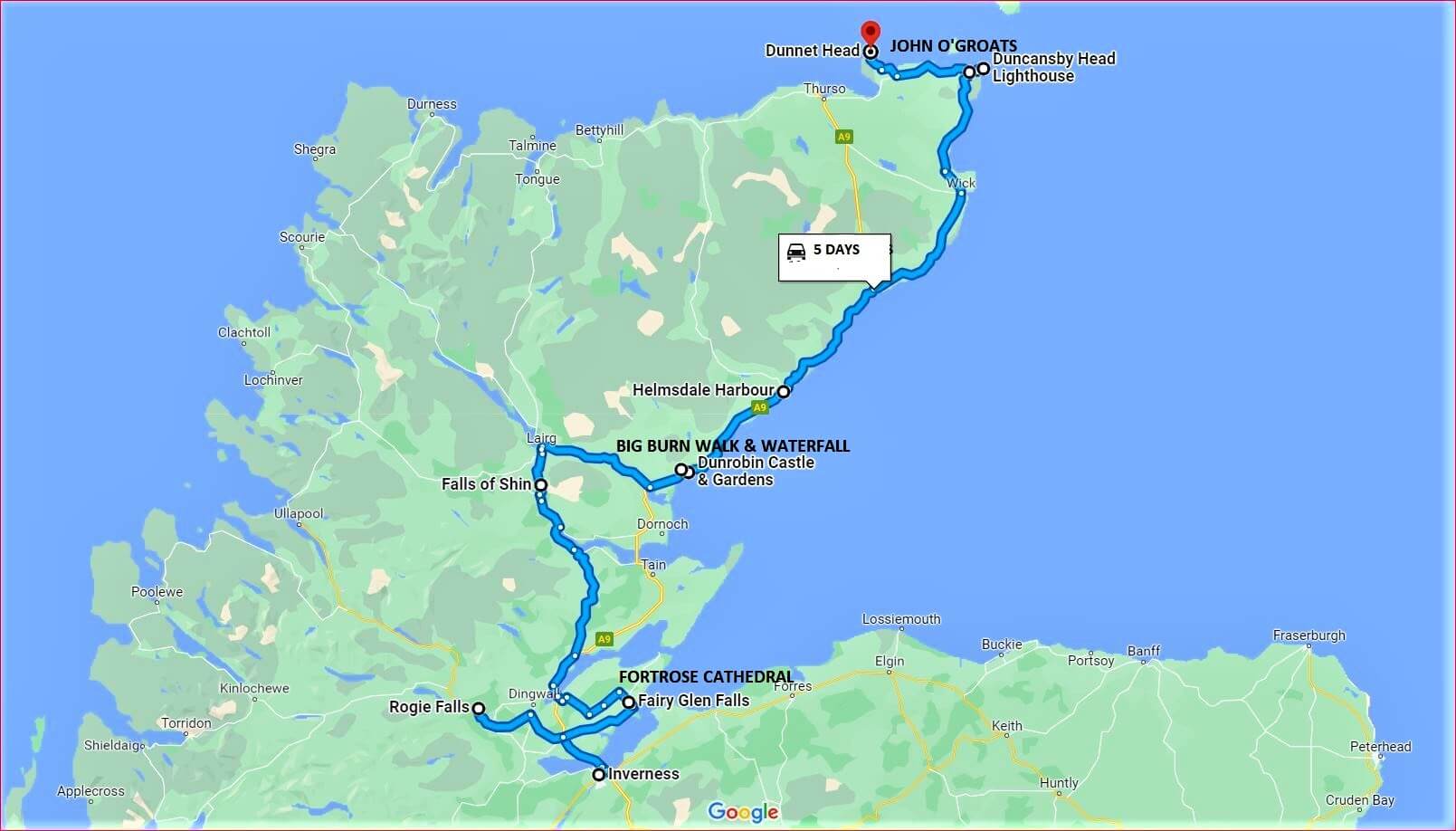
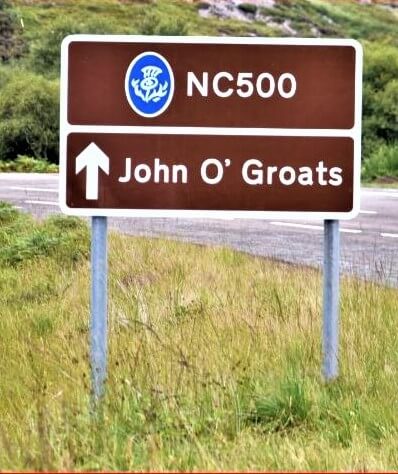
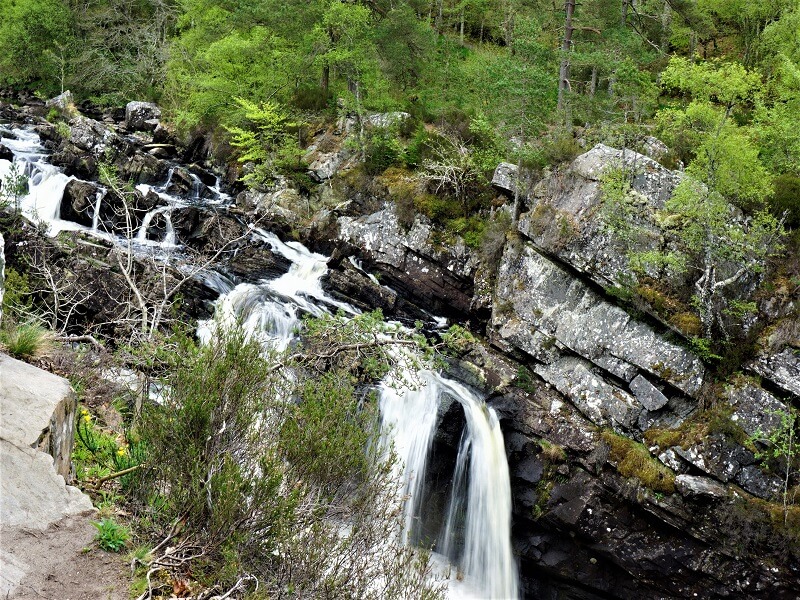
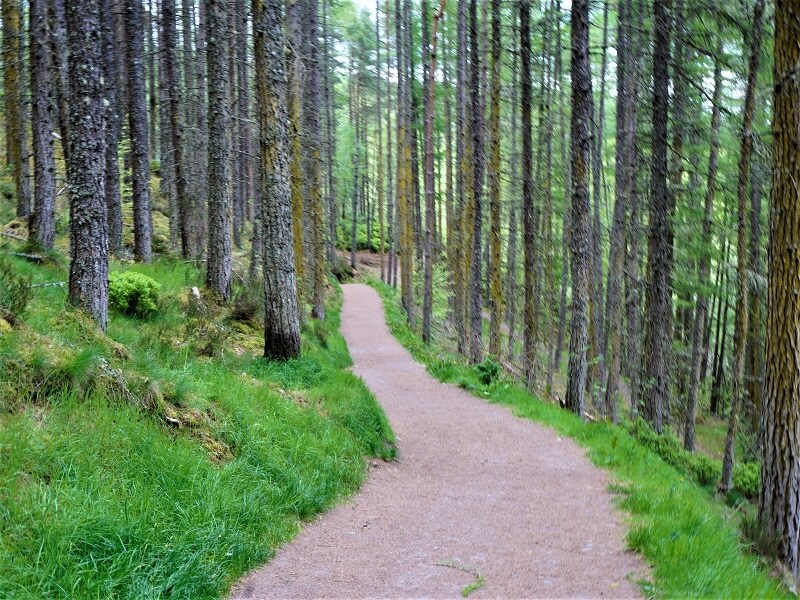
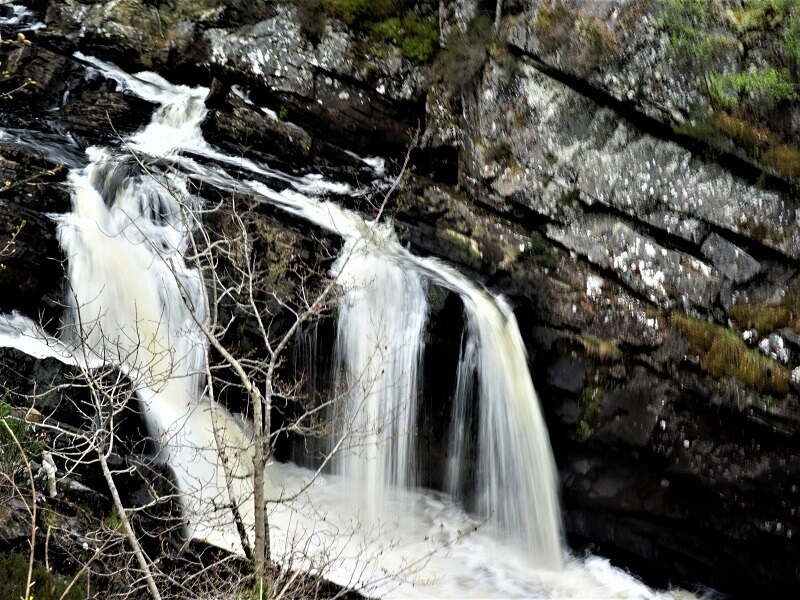
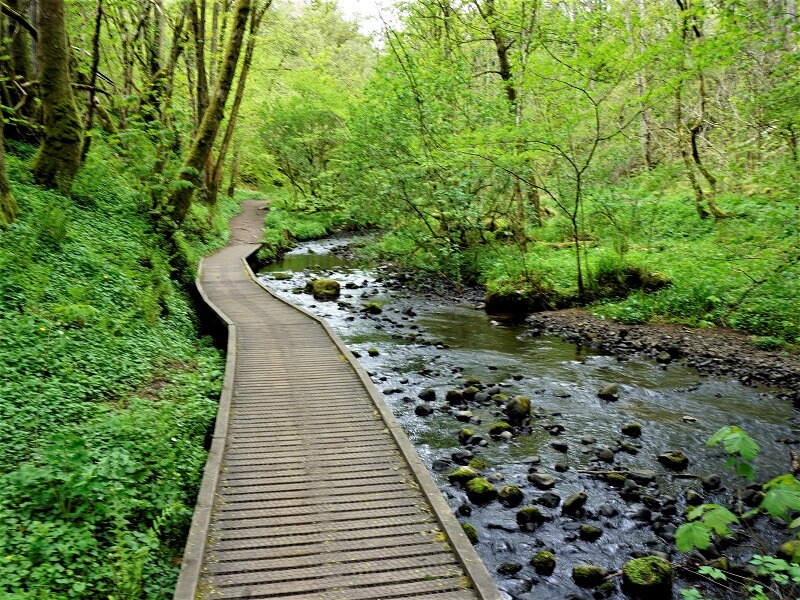

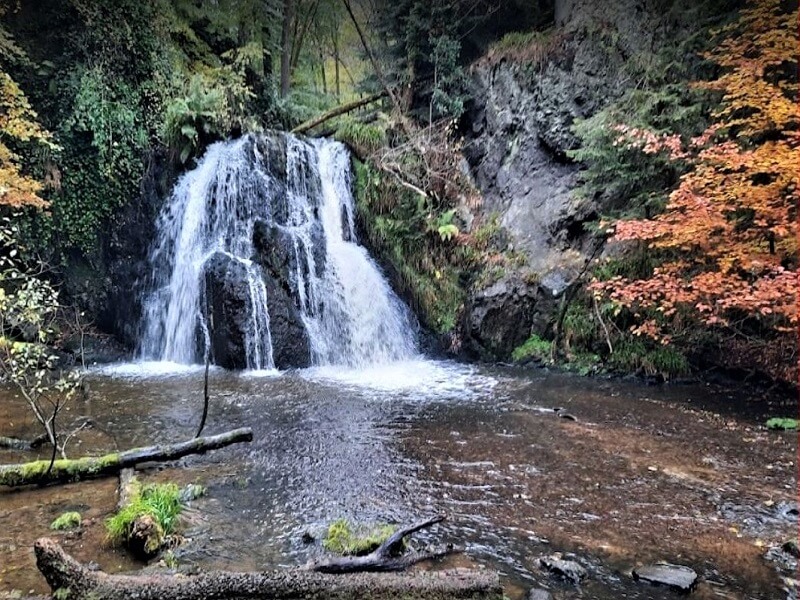

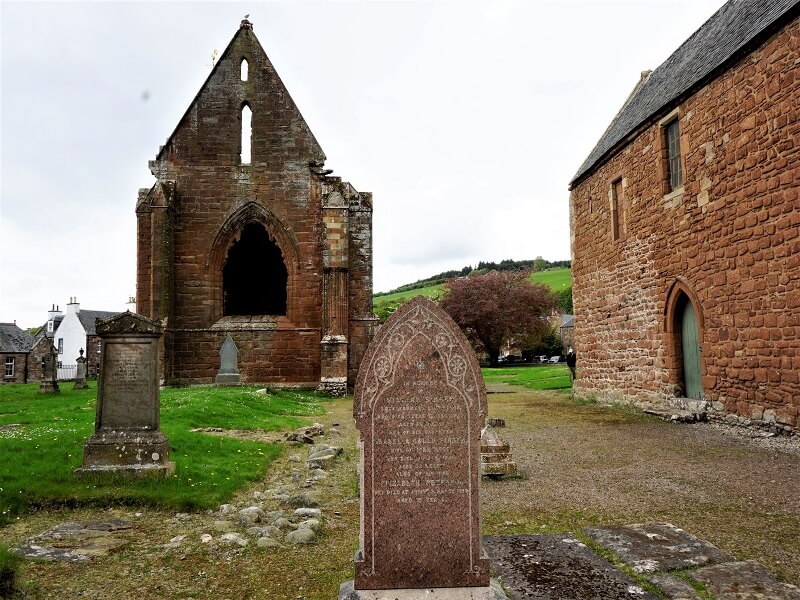

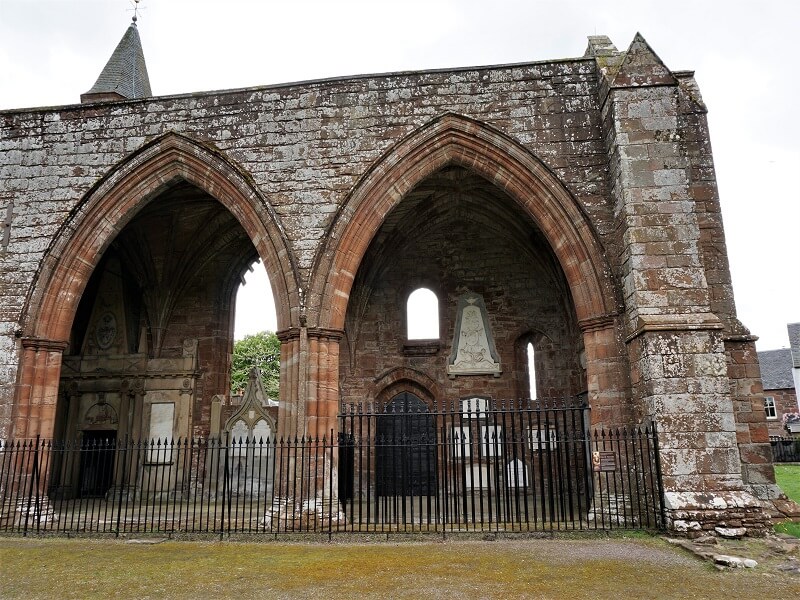
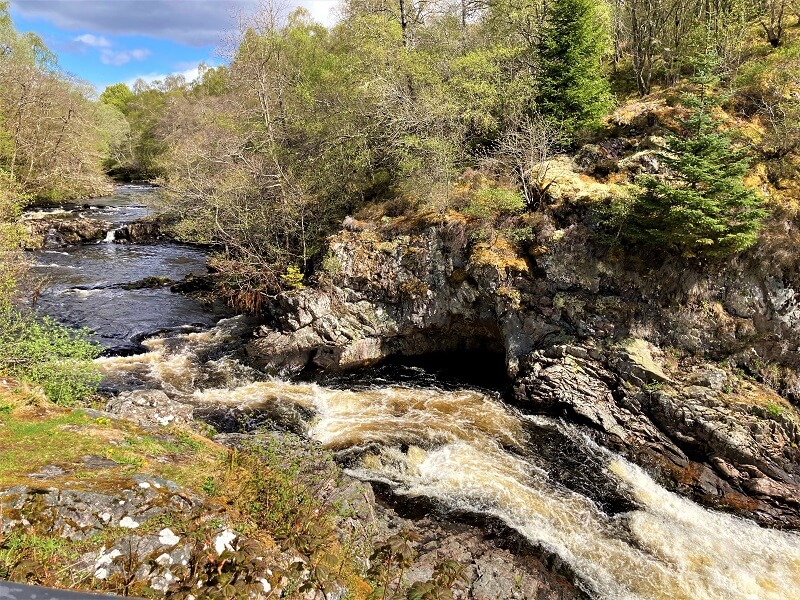
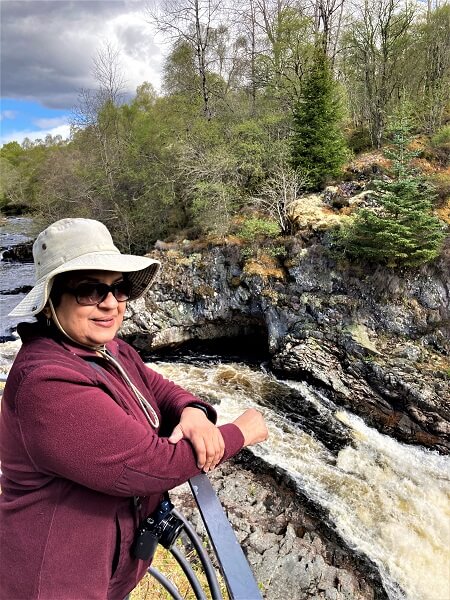
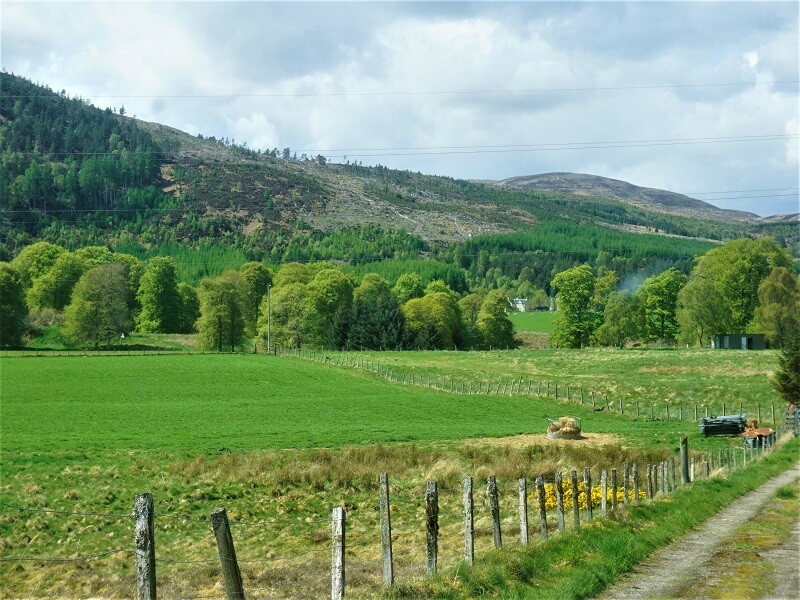
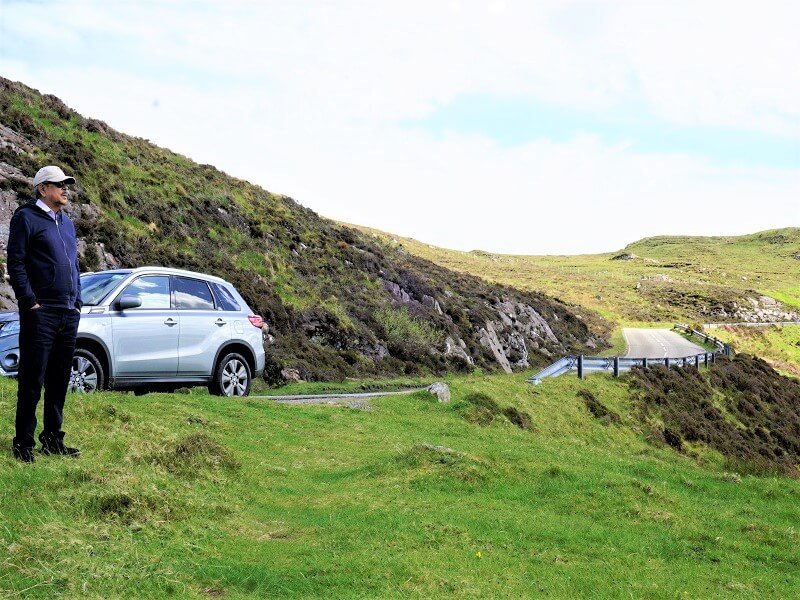
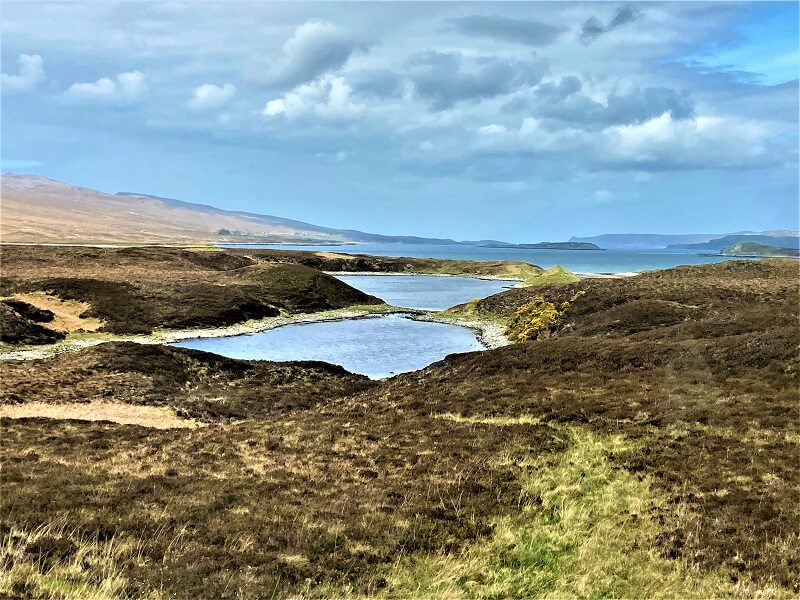

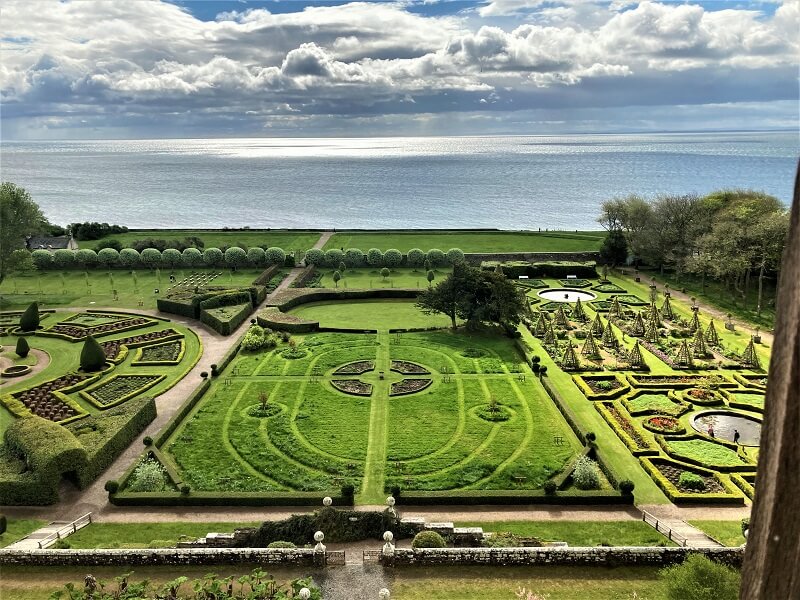
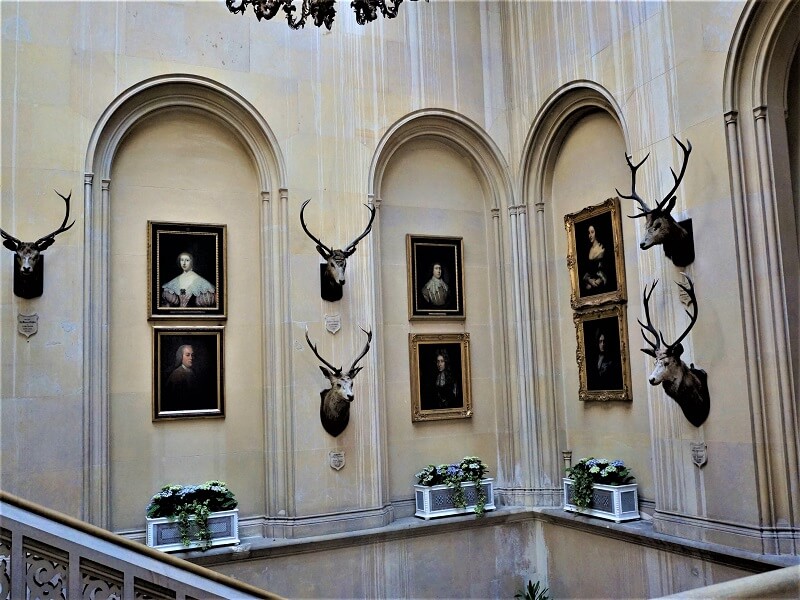
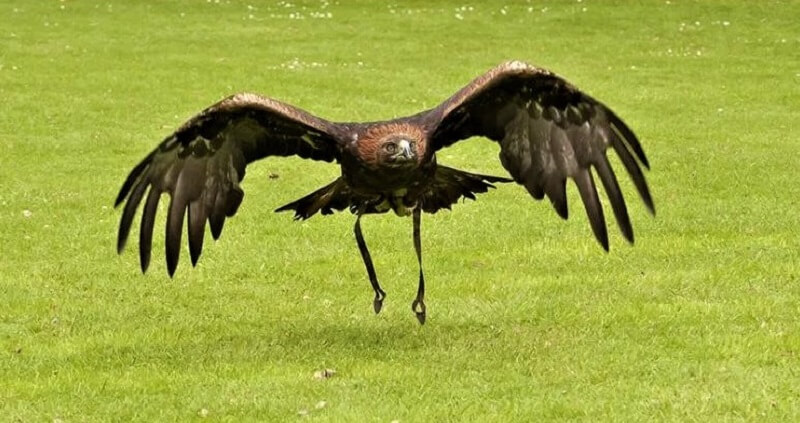

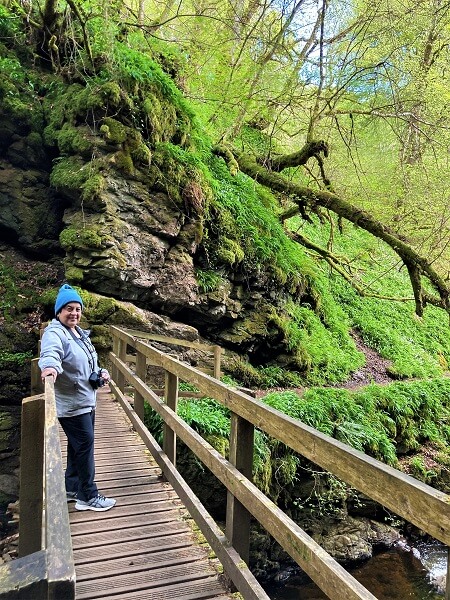
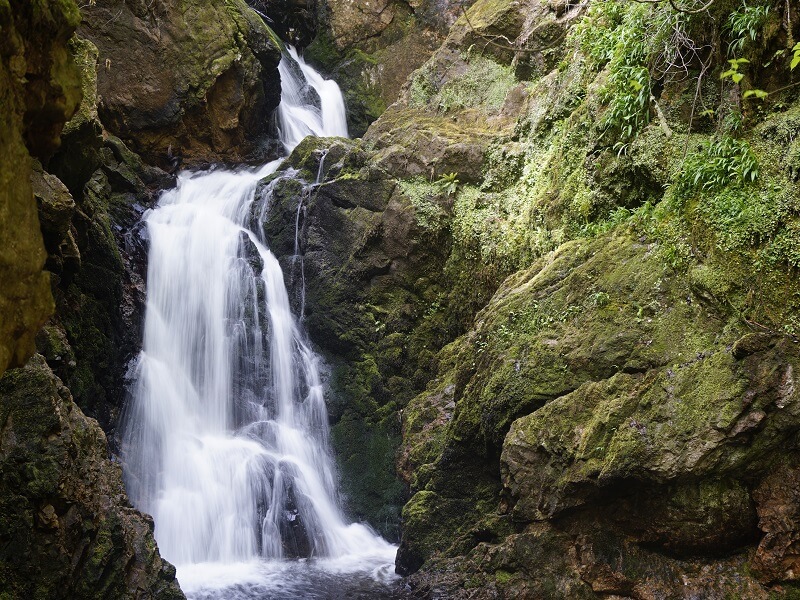
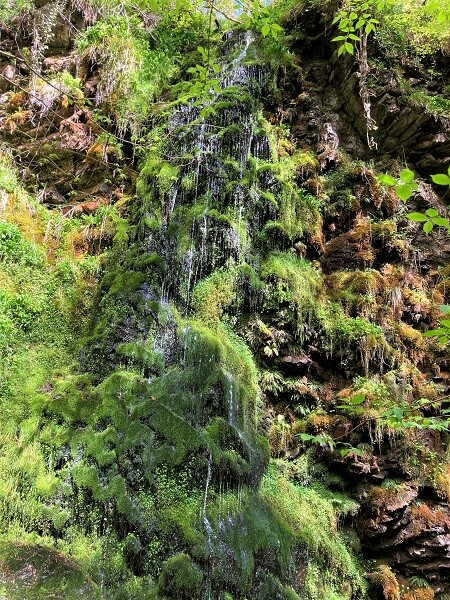
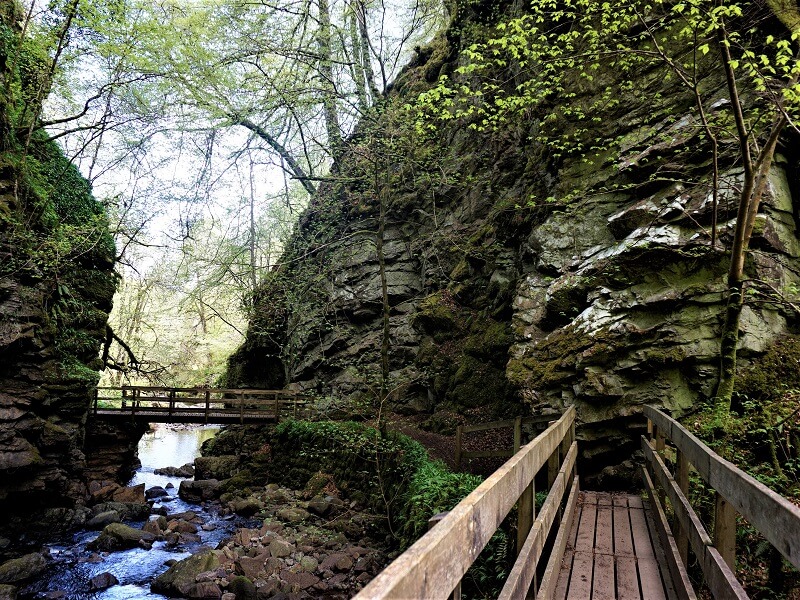

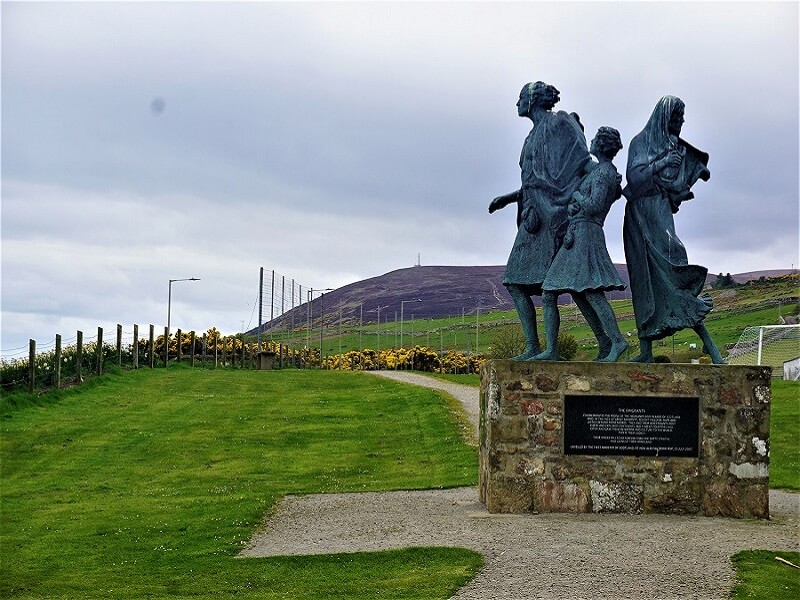
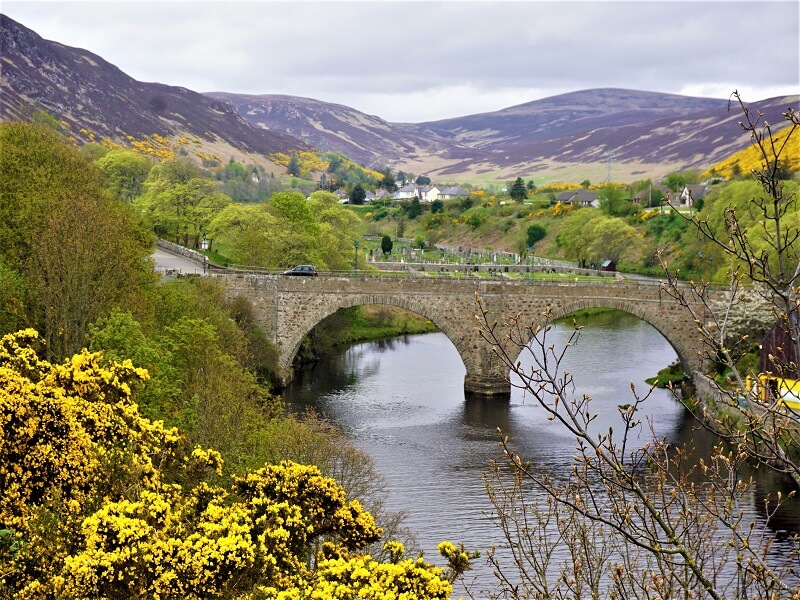
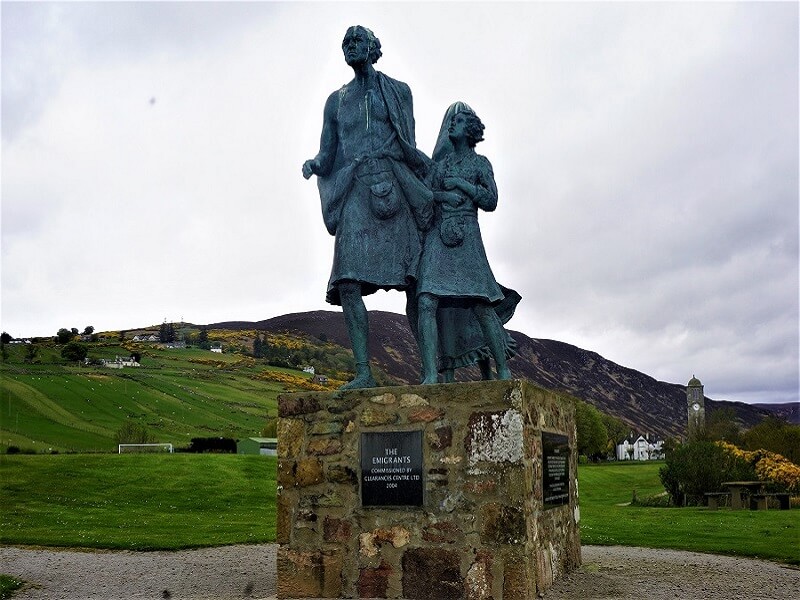
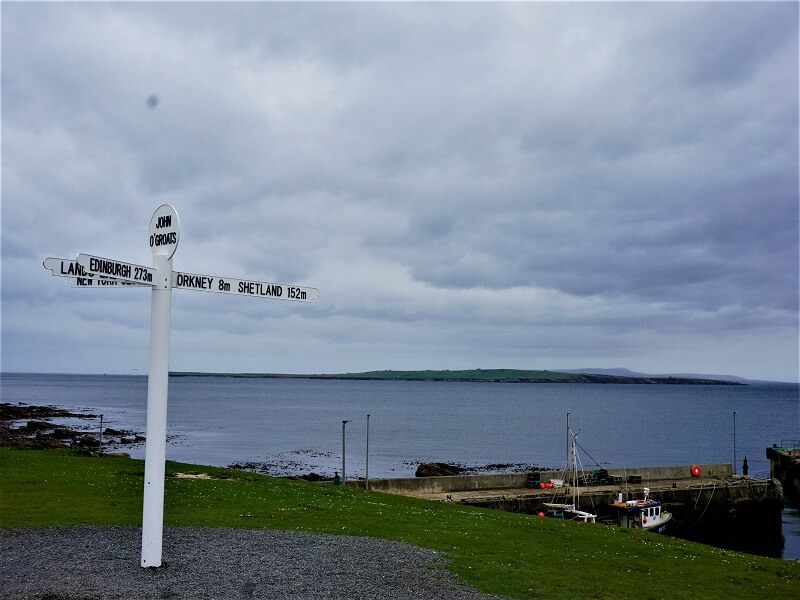
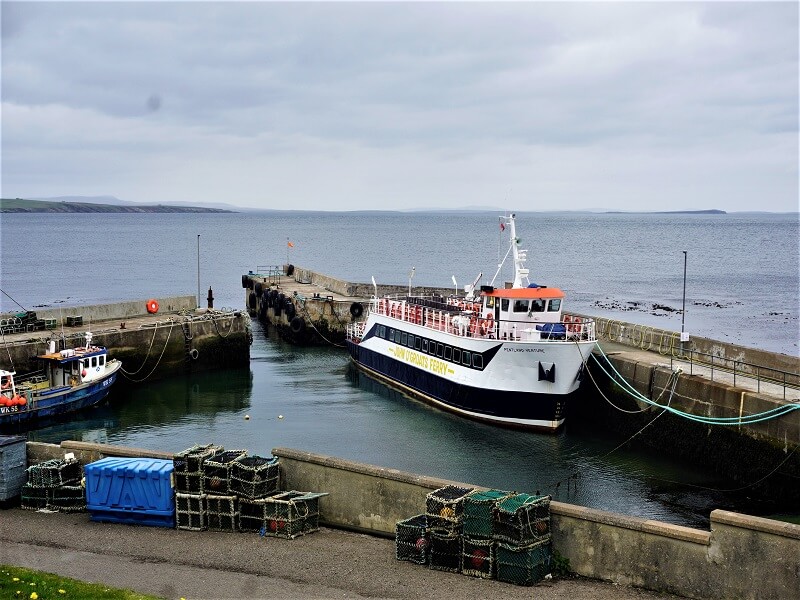
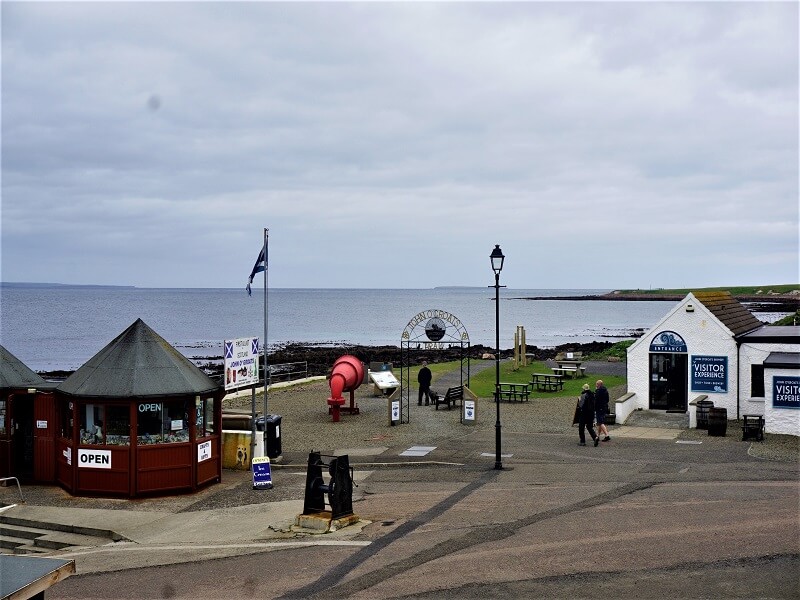
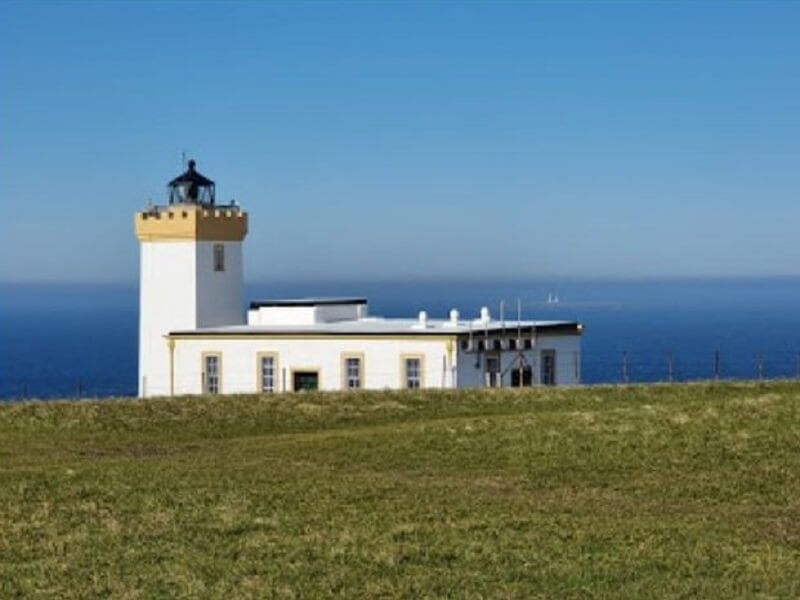

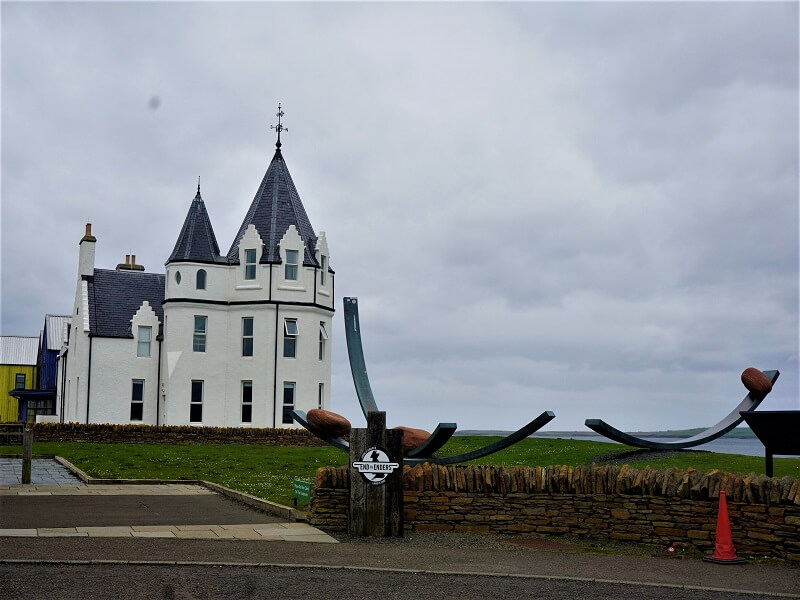
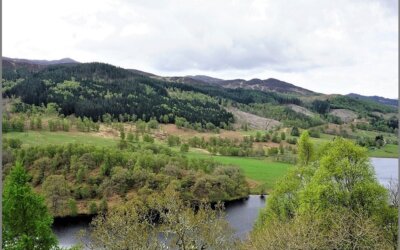
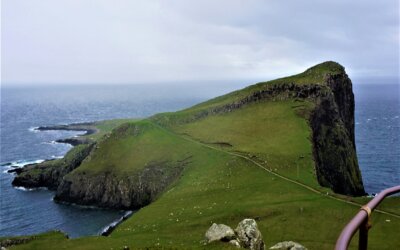
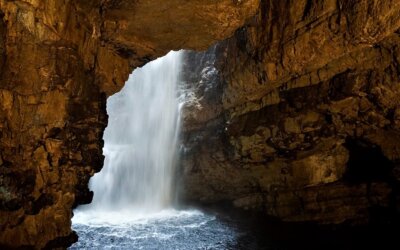
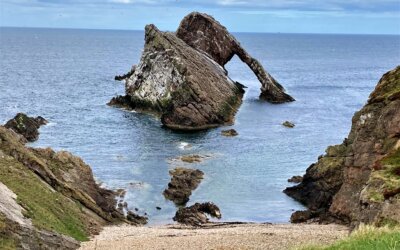
What an excellent looking drive – not heard of this one. Seems like a delightful mix of castles, nature and waterfalls. Always wanted to get to John O Groats!
We are looking at future road trips. And Scotland is definitely on our list. Following the NC500 route through the Northern Scottish Highlands. I love all the great outdoor sights along the way. This might slow us down considerably. And who could visit Scotland and not stop at a castle or two? Great that Dunrobin Castle has an inside museum to explore too.
Water views are a must for any trip I take and this part of Scotland looks beautiful with waterfalls and rivers around every bend!
Wow, that castle is so impressive on its promontory from above, I would love to see more of the interiors. The countryside, lakes, waterfalls and walks all look so inviting especially since I’m not really familiar with this area. It truly is scenic and beautiful to explore everywhere from what I see in the photographs.
What a beautiful drive! Scotland was one of our favorite vacations that we’ve taken together, and we split our time between the Isle of Skye and Edinburgh. We knew at the time that there was so much more to see, but we had to be selective. I would love to return to do this drive! The castles look stunning and so goes Fairy Glen Falls. It’s good to know that gas stations are on short supply here. I’m adding this to my list for our next vacation. 🙂 Great tips!
Oh my! I love this route because it has such a great combination of coastal and inland driving. Those waterfalls are lovely! And you really can’t beat coastal views. I love the shots with the boats. Beautiful!
These landscapes and waterfall are amazing, specially the Fairy Glen Falls. The DunRobin castle has an amazing garden and it architecture stunning. It is pretty inviting to visit inside. I have been in Scotland when I was a teenager and my memories are quite vague. Your post and photos a making me want to come back.
What a great drive to take! I’d love to see any and all of those waterfalls. And Dunrobin Castle looks amazing
What a beautiful route! I love all the waterfalls
I went thru the centre of Scotland so I missed this route. It looks fabulous.
What an epic drive it must have been! And wow, I had no idea Scotland was so photogenic! 🙂
What a lovely road to drive and to discover! So many beautiful landscapes! Also, Dunrobin castle is absolutely fantastic! I really hope I can go back to Scotland someday! it’s a beautiful place! Thanks for sharing this!
I have been to Scotland several times – but this is the first time I read about the NC 500 route. It seems to be a very scenic drive along the less-visited East coast of Scotland. I am not so much into waterfalls, but Fortrose cathedral and Dunrobin castle look amazing! I put them on the list for a future visit to Scotland.
Ever since I got my license I wanted to drive the NC500 route in Scotland. It is such a wonderful road, with so many amazing places to stop at. It is good to know that there aren’t many petrol stations on this route, and to take advantage and fill up when you see one. I would definitely stop at Dunrobin castle, it looks so pretty!
Wow Scotland is certainly a traveler’s delight with all that it has to offer. We missed visiting during our two trips to UK but we wouldn’t certainly next time. The Fairy Glen and Rogue waterfalls are so beautiful. The Fortrose Cathedral would be a great place to spend some time and Dunrobin Castle would be my wife’s favorite with all the histort attached. Thanks for motivating me to visit Scotland.
Wow! These are indeed beautiful sights. As a huge fan of the Outlander series, I have dreamed to visit Scotland. It would be nice to explore Dunrobin Castle as well as the harbour in Helmsdale.
Great picture of the falcon. And so much green and water! Beautiful! I took that ferry to the Orkney Islands back in the 1970s …. what an adventure.
This is awesome. It is too bad that I didn’t manage to explore Scotland well during my stay in England. This coastal trip from Inverness to John O Groates sounds so nice. Wild Salmons leaping upstream? I’m intrigued. Let me look for a YT Video of that at least to begin with. Fortrose Cathedral looks absolutely charming. I’m always in love with those historic churches in ruins. Dunrobin Castle looks iconic indeed and my daughter would love the Falconry show.
Amazing drive and views!!! loved the pics specially the zoom in option.